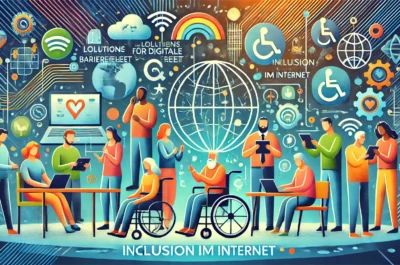 Die Kriege von Heute werden nicht mehr auf dem Schlachtfeld bestritten, sondern im Web. Computerprogramme wie Stuxnet oder der vor einigen Tagen entdeckte Virus Duqu spionieren wirtschaftliche Ziele aus und senden Daten an deren Entwickler zurück, bis hin zur Manipulation der spionierten Anlagen. Das damit allerdings nicht nur Wirtschaftspionage betrieben wird, sondern auch politische Krisen herauf beschworen werden können, die im Ernstfall sogar den Weltfrieden in Gefahr bringen, ist möglich. Bei TEDxParis spricht Guy-Philippe Goldstein darüber, wie Cyberattacken von der digitalen Welt in die physische Welt umschlagen können. Der Redner selber ist der Autor von „Babel Minute Zero“, einem Roman, der die Realität des Cyberwar in unserer aktuellen geopolitischen Topographie untersucht.
Die Kriege von Heute werden nicht mehr auf dem Schlachtfeld bestritten, sondern im Web. Computerprogramme wie Stuxnet oder der vor einigen Tagen entdeckte Virus Duqu spionieren wirtschaftliche Ziele aus und senden Daten an deren Entwickler zurück, bis hin zur Manipulation der spionierten Anlagen. Das damit allerdings nicht nur Wirtschaftspionage betrieben wird, sondern auch politische Krisen herauf beschworen werden können, die im Ernstfall sogar den Weltfrieden in Gefahr bringen, ist möglich. Bei TEDxParis spricht Guy-Philippe Goldstein darüber, wie Cyberattacken von der digitalen Welt in die physische Welt umschlagen können. Der Redner selber ist der Autor von „Babel Minute Zero“, einem Roman, der die Realität des Cyberwar in unserer aktuellen geopolitischen Topographie untersucht.
Transkription/Guy-Philippe Goldstein
Good afternoon. If you have followed diplomatic news in the past weeks, you may have heard of a kind of crisis between China and the U.S. regarding cyberattacks against the American company Google. Many things have been said about this. Some people have called a cyberwar what may actually be just a spy operation — and obviously, a quite mishandled one. However, this episode reveals the growing anxiety in the Western world regarding these emerging cyber weapons.
It so happens that these weapons are dangerous. They’re of a new nature: they could lead the world into a digital conflict that could turn into an armed struggle. These virtual weapons can also destroy the physical world. In 1982, in the middle of the Cold War in Soviet Siberia, a pipeline exploded with a burst of 3 kilotons, the equivalent of a fourth of the Hiroshima bomb. Now we know today — this was revealed by Thomas Reed, Ronald Reagan’s former U.S. Air Force Secretary — this explosion was actually the result of a CIA sabotage operation, in which the they had managed to infiltrate the IT management systems of that pipeline.
More recently, the U.S. government revealed that in September 2008, more than 3 million people in the state of Espirito Santo in Brazil were plunged into darkness, victims of a blackmail operation from cyber pirates. Even more worrying for the Americans, in December 2008 the holiest of holies, the IT systems of CENTCOM, the central command managing the wars in Iraq and Afghanistan, may have been infiltrated by hackers who used these: plain but infected USB keys. And with these keys, they may have been able to get inside CENTCOM’s systems, to see and hear everything, and maybe even infect some of them. As a result, Americans take the threat very seriously. I’ll quote General James Cartwright, Vice Chairman of the Joint Chiefs of Staff, who says in a report to Congress that cyberattacks could be as powerful as weapons of mass destruction. Moreover, the Americans have decided to spend over 30 billion dollars in the next five years to build up their cyberwar capabilities.
And across the world today, we see a sort of cyber arms race, with cyberwar units built up by countries like North Korea or even Iran. Yet, what you’ll never hear from spokespeople from the Pentagon or the French Department of Defense is that the question isn’t really who’s the enemy, but actually the very nature of cyber weapons. And to understand why, we must look at how, through the ages, military technologies have maintained or destroyed world peace. For example, if we’d had TEDxParis 350 years ago, we would have talked about the military innovation of the day — massive Vauban-style fortifications — and we could have predicted a period of stability in the world or in Europe, which was indeed the case in Europe between 1650 and 1750.
Similarly, if we’d had this talk 30 or 40 years ago, we would have seen how the rise of nuclear weapons, and the threat of mutually assured destruction they imply, prevents a direct fight between the two superpowers. However, if we’d had this talk 60 years ago, we would have seen how the emergence of new aircraft and tank technologies, which give the advantage to the attacker, make the Blitzkrieg doctrine very credible and thus create the possibility of war in Europe. So military technologies can influence the course of the world, can make or break world peace — and there lies the issue with cyber weapons.
The first issue: Imagine a potential enemy announcing they’re building a cyberwar unit, but only for their country’s defense. Okay, but what distinguishes it from an offensive unit? It gets even more complicated when the doctrines of use become ambiguous. Just 3 years ago, both the U.S. and France were saying they were investing militarily in cyberspace, strictly to defend their IT systems. But today both countries say the best defense is to attack. And so, they’re joining China, whose doctrine of use for 15 years has been both defensiv and offensive.
The second issue: Your country could be under cyberattack with entire regions plunged into total darkness, and you may not even know who’s attacking you. Cyber weapons have this peculiar feature: they can be used without leaving traces. This gives a tremendous advantage to the attacker, because the defender doesn’t know who to fight back against. And if the defender retaliates against the wrong adversary, they risk making one more enemy and ending up diplomatically isolated. This issue isn’t just theoretical.
In May 2007, Estonia was the victim of cyberattacks, that damaged its communication and banking systems. Estonia accused Russia. But NATO, though it defends Estonia, reacted very prudently. Why? Because NATO couldn’t be 100% sure that the Kremlin was indeed behind these attacks. So to sum up, on the one hand, when a possible enemy announces they’es building a cyberwar unit, you don’t know whether it’s for attack or defense. On the other hand, we know that these weapons give an advantage to attacking.
In a major article published in 1978, Professor Robert Jervis of Columbia University in New York described a model to understand how conflicts could arise. In this context, when you don’t know if the potential enemy is preparing for defense or attack, and if the weapons give an advantage to attacking, then this environment is most likely to spark a conflict. This is the environment that’s being created by cyber weapons today, and historically it was the environment in Europe at the onset of World War I. So cyber weapons are dangerous by nature, but in addition, they’re emerging in a much more unstable environment.
If you remember the Cold War, it was a very hard game, but a stable one played only by two players, which allowed for some coordination between the two superpowers. Today we’re moving to a multipolar world in which coordination is much more complicated, as we have seen at Copenhagen. And this coordination may become even trickier with the introduction of cyber weapons. Why? Because no nation knows for sure whether its neighbor is about to attack. So nations may live under the threat of what Nobel prize winner Thomas Schelling called the „reciprocal fear of surprise attack,“ as I don’t know if my neighbor is about to attack me or not — I may never know — so I might take the upper hand and attack first.
Just last week, in a New York Times article dated January 26, 2010, it was revealed for the first time that officials at the National Security Agency were considering the possibility of preemptive attacks in cases where the U.S. was about to be cyberattacked. And these preemptive attacks might not just remain in cyberspace. In May 2009, General Kevin Chilton, commander of the U.S. nuclear forces, stated that in the event of cyberattacks against the U.S., all options would be on the table.
Cyber weapons do not replace conventional or nuclear weapons — they just add a new layer to the existing system of terror. But in doing so, they also add their own risk of triggering a conflict — as we’ve just seen, a very important risk — and a risk we may have to confront with a collective security solution including all of us: European allies, NATO members, our American friends and allies, our other Western allies, and maybe, by forcing their hand a little, our Russian and Chinese partners.
The information technologies Joël De Rosnay was talking about, which were historically born from military research, are today on the verge of developing an offensive capability of destruction, which could tomorrow, if we’re not careful, completely destroy world peace.
Thank you.
Artikel per E-Mail verschicken
Schlagwörter: Babel Minute Zero, Cyberwar, Guy-Philippe Goldstein, TED

